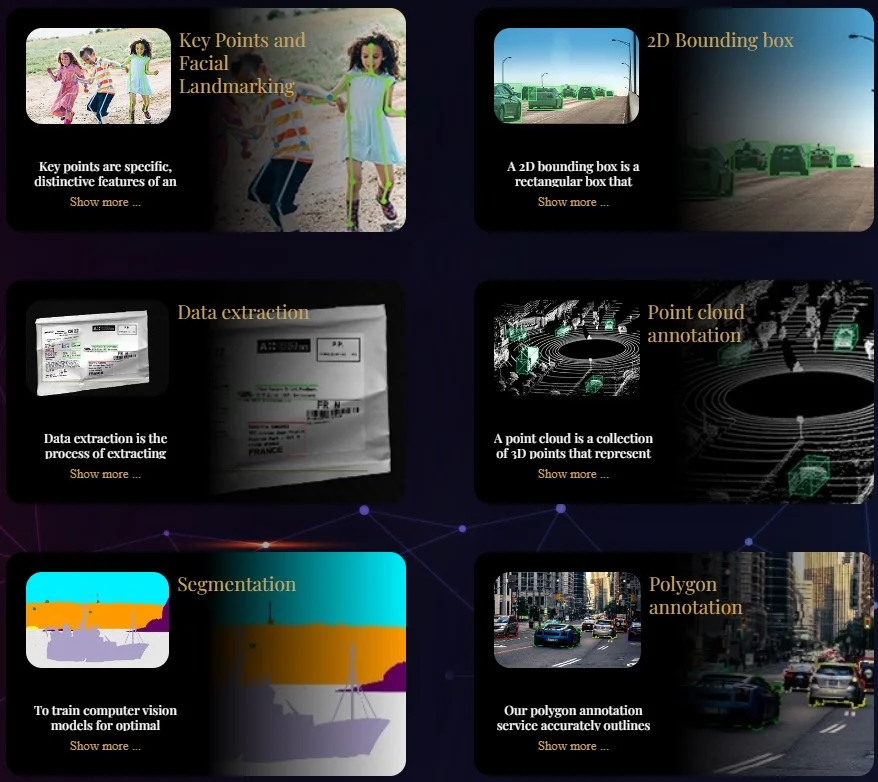In the ever-evolving landscape of computer vision, annotation services serve as the backbone, enabling AI algorithms to make sense of visual data. Here, we delve into the diverse world of annotation services tailored to the specific needs of computer vision applications.
Image Classification:
At the core of computer vision lies image classification. This service involves categorizing images into distinct classes, training models to recognize and differentiate objects accurately. Whether it's identifying different species of animals or classifying various products, image classification lays the foundation for numerous AI-driven applications.
2D Bounding Box (BB):
2D BB annotation involves drawing rectangular boxes around objects in images, precisely outlining their location. It is a fundamental task in object detection, crucial for applications like surveillance and autonomous vehicles.
Segmentation:
Segmentation delves into the finer details of visual data, offering different levels of annotation:
a) Semantic Segmentation: With pixel-level annotation, semantic segmentation outlines the boundaries of each object within an image. This is essential for medical imaging and scene understanding.
b) Instance Segmentation: This technique goes beyond semantic segmentation, differentiating between individual objects of the same class within an image. It plays a vital role in robotics and object tracking.
c) Panoptic Segmentation: A holistic approach, panoptic segmentation combines instance and semantic segmentation to achieve a comprehensive understanding of visual scenes.
Convex Hull:
Convex hull annotation involves creating a polygon that encloses a set of points, helping to define the overall shape and structure of objects in images.
Keypoints:
Keypoints annotation marks specific points of interest in an image, enabling AI models to recognize and analyze human or animal poses, facial expressions, and hand gestures.
Skeleton:
Skeleton annotation involves creating a simplified representation of the structure of an object, crucial for tasks like gesture recognition and movement analysis.
3D Bounding Box on Images:
Extending to three-dimensional space, 3D BB annotation encompasses drawing boxes around objects in images to facilitate AI's understanding of the real-world environment.
3D Bounding Box on Point Clouds:
Similar to 3D BB on images, this service focuses on annotating objects within point clouds, critical for augmented reality and robotics.
Point Cloud Segmentation:
Point cloud segmentation involves dividing point clouds into distinct regions, aiding in object recognition and spatial understanding.
Data Extraction:
Data extraction annotation focuses on extracting specific information, such as text or numerical data, from images.
Discover the potential of computer vision with InfoScribe's comprehensive range of annotation services :
https://infoscribe.ai/en
 APPOINTMENT
APPOINTMENT
